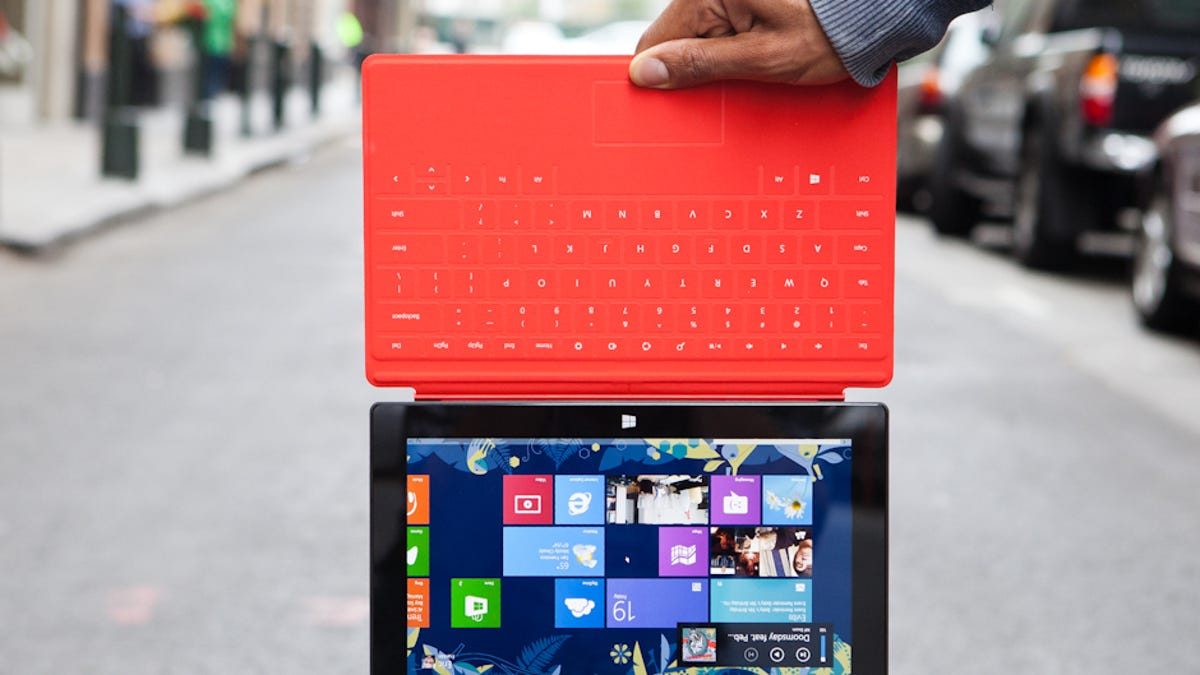4 things Microsoft's Surface 2 can learn from Nokia
Surface 2 is very likely coming later this year. Here's how Microsoft can learn from Nokia's past successes and failures to make the forthcoming tablet better.

Microsoft has three generations of experience making hardware with its Xbox brand, however, the gaming industry lives in 5- to 7-year cycles. Mobile moves faster than that. A lot faster. With consumers expecting yearly tablet updates, Microsoft has to be smart about the future of its tablet line.
Nokia has a well-documented history of mobile innovation and was instrumental in creating the cell phone as we know it. A lot of that pioneering spirit can be carried over into tablet development. If Microsoft is listening -- and it seems to be in a listening mood as of late -- here are a few things it can learn from Nokia when building the next and future versions of Surface. And with a little luck, hopefully the company's next tablet will enjoy a bit more success.
It can lose the stuffy look
Surface RT boasts a strong industrial, sturdy build; however, despite Microsoft's marketing, Surface RT's design definitely isn't the most approachable I've ever seen.
The result was an almost schizophrenic unfocused identity that left consumers confused as to what exactly this device was for. Was it a productivity device for mom or an entertainment gadget for the kids? By straddling that line it ultimately appealed to neither demographic in any great number.
Surface needs a stronger identity and one that alienates the fewest consumers possible. Here's where Nokia comes in. Though its Lumia line of phones do come in plain old black and white, its the approachable colorful phones that make Lumias stand out from the pack, with a consistent and distinct style that's all its own.
Lumia phones have a strong identity and are easily and immediately recognizable -- serious devices that are still fun to use. Lumia phones nail that balance between Fisher Price and sexy. At once appealing to a younger market, while not making us old fogies feel like we're using a toy. The Nexus 7 (2012) and iPad Mini are both great examples of this can be achieved with tablets. Surface 2 should embody that more mirthful type of design.
It can take the lead on tablet camerasTablet cameras by and large are terrible and I can think of very few exceptions where you'd want to use one over your smartphone's shooter. There's also the awkward dorky factor of using a tablet camera, which can be helped -- but, much to my dismay not completely obliterated -- by going with a smaller lighter tablet design, like the Nexus 7 (2013). One of a very few tablets I feel (barely) comfortable using to snap photos in public.
Despite decent cameras being included in the iPad and Asus' Transformer line -- not to mention a nice effort from Sony -- no tablet manufacturer has really taken the lead on camera tech. I've reviewed plenty of tablets and with very rare exception has the tablet's camera quality been a major factor of the review score. Come on. If you're going to include a camera, make it a good one. Nokia has the history to help Microsoft do just that.
A 7- to 8-inch Surface 2 with an honest to goodness badass camera -- not just one good "for a tablet" -- could be huge in making the tablet stand out from the myriad of tablets with just bad camera and give the brand the aforementioned and much-needed wider appeal.
A more thoughtful design or "Why can't I use my tablet laptop on my lap?"
While Surface RT is solidly built and the built-in kickstand is incredibly useful when watching videos or typing on a desktop, it is abhorrently ineffective when attempting to balance it on your lap while typing.
Nokia has a long history of making some of the most widely used phones of the time and by and large it knows what works and what doesn't. There's a commitment to design with Nokia that's clear with the vast majority of its phones. Microsoft should leverage that mentality for its tablet line.
Windows RT failed Microsoft from day one, and its biggest issue is a simple one: it's a stripped down, more limited version of Windows 8 with no inherent advantages. It's Windows 8 if you ripped away its most essential functionality.
This is where Microsoft can actually use Nokia's past failure to its future success. Nokia had its problems with a scattered OS strategy that over the years included support for both the Symbian and MeeGo OS. Even after both iOS and Android had hit their stride, Nokia continued to rely on these OSes, which proved limiting to its customers. Nokia failed to adapt and that ultimately led to where we are today.
Some out there are calling for RT's head. I don't think that's necessary and some of the changes made to Windows 8.1 (and I really like some of Jessica Dolcourt's Windows Phone suggestions) are a definite step in the right direction, but ultimately Microsoft needs to be more thoughtful with its tablet OS. Completely exorcising the Desktop interface -- while keeping Microsoft Office and Control Panel functionality, all accomplished through touch controls of course -- should be the long-term goal for RT. By providing its customers with a pure touch-based tablet OS that caters to tablet needs, Windows RT could be a bona fide and powerful operating system.
Both companies have an opportunity here to use lessons learned with past mistakes towards making something better. Let's hope they

